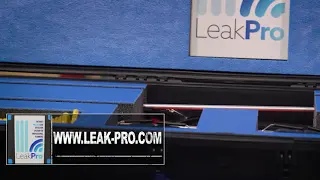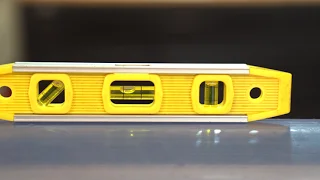If you’re a plumber (or a plumbing company owner) wanting to master water and sewer leak detection—beyond generic “pool gear”—this center aims to fill that gap. Below, you’ll see why we’re digging trenches, burying valves, and how we plan to use real-world scenarios for unmatched hands-on practice.
Why a Training Center for Leak Detection?
A Decade of Frustration
Most leak detection tools and classes I initially encountered were designed for swimming pools, then repurposed for indoor plumbing. That mismatch led to half-baked solutions, guesswork, and repeated mistakes on job sites. By building a specialized center, we can teach plumbers exactly how to isolate water lines, measure flows, and confirm location with zero guesswork.
Hands-On Over Theory
It’s one thing to read a manual. It’s another to handle real copper or PVC lines set at typical slab depths, replicate actual pressure flows, and practice flipping test balls in sewer lines. Our facility offers a controlled but authentic environment—cut concrete, pressurize leaks, and allow trainees to pinpoint them precisely.
The Process: From Dirt to Slab
1. Clearing and Leveling
We chose a 25×60-foot area on our property, dug down about 6–7 inches, then poured a solid 5-inch thick slab. That ensures it can handle trucks driving over it or heavy machinery, plus any expansions we plan later.
2. Forming and Steel Reinforcement
Concrete pros built forms around the perimeter and added rebar or mesh for strength. We carefully measured where we wanted water and sewer lines to emerge, planning for multiple training configurations.
3. Burying Water Lines
- Trenching with a Ditch Witch: We cut narrow trenches about 12 inches deep. Then we laid copper lines (some deeper, some shallower) to simulate different leak difficulties.
- Valves and Manifolds: Each training “line” leads back to a dedicated valve in a 4-inch sleeve. This way, students can isolate lines by name—“kitchen sink,” “master bath toilet,” etc.—and practice listening at each valve.
- Leak Simulation: We’ve drilled small holes to create about 1–1.5 gallons per minute leaks at 70 PSI. That flow rate helps new plumbers estimate how meter clocks correlate to actual leak sizes.
4. Sewer Setup
At one end, we’re building a realistic “house” sewer line in both PVC and cast iron sections. Plumbers can learn to isolate branch lines, flip test balls, and confirm sewer leaks—using exactly the same code requirements and real-world geometry they’d find in a job.
Finalizing the Concrete and Lines
Inside Cutting & Backfilling
After everything was in place, we used specialized tools (like the EasyGrind by TigerFish) to trim stubs flush with the slab. We tested all lines, verifying no leaks or misalignments before the concrete pour. Once poured, we let it cure and carefully rechecked our layout to ensure training zones were correct.
Naming the Lines
It may sound basic, but naming each line—“Line A: Master Bath Sink,” “Line B: Kitchen Sink,” etc.—makes it easier for students. They’ll walk up to a set of valves, listen with leak detection gear, and deduce which lines are involved based on the sound or pressure readings.
Training Modules: Water & Sewer
Water Leak Isolation
Plumbers often guess which line is leaking under a slab. We aim to eliminate guesswork by showing how to systematically check each valve, measure flow at the meter, and trace the line’s path to the suspected leak. Different depths and directional turns mimic the chaos of real homes.
Sewer Ball Flipping
Another highlight: isolating PVC or cast iron lines in multiple directions. Students practice test-ball flipping, dropping one ball behind the other to confirm exactly which branch is leaking. This skill drastically reduces jackhammering or guess-based tear-outs.
Who Should Attend?
Individual Plumbers
If you want to stand out at your company or on job sites, advanced leak detection is a golden skill. You’re not just “the person who guesses under the slab”—you’re the expert who nails it first time, every time.
Plumbing Company Owners
Offering advanced leak detection services can boost your bottom line. Few local competitors may have the gear or training. Our center’s approach ensures your entire crew learns consistent, code-compliant methods and the “why” behind them.
Why Go Beyond Pool Gear?
Mismatched Methodologies
Many kits sold for leak detection revolve around pool structures—where the line is easily accessible, and the environment is different than a pressurized household system. Our center uses real house piping, typical pressure ranges, actual soils, and standard copper/PVC/PEX lines.
Verification and Confidence
If you can find a pinhole or hairline crack in a 12-inch-deep copper line consistently, you’ll trust your readings on the next real job. Confidence matters—both for the plumber and for the homeowner who’s about to see you break open their floor.
Next Steps: When & How to Enroll
Timeline
The slab is poured, lines buried, and finishing touches are underway. We anticipate opening training sessions soon—once we finalize roofing, additional mock-ups, and scheduling. Keep an eye on Leak-Pro.com or my social channels for official announcements.
Class Formats
We plan short, intensive courses—2-3 days each—covering everything from water line mapping to advanced sewer isolation. Class size will be limited so each student gets hands-on. We’ll also offer advanced mentorship for those who want extra practice or one-on-one coaching.
Conclusion
I’ve dreamed of a specialized, plumber-focused leak detection facility for years. Buying a plot of land and building an entire slab might sound extreme, but genuine experience requires real lines, real leaks, and real solutions. If you’re serious about honing your craft—whether you’re a one-person shop or running a plumbing business—this upcoming training center is built to help you master the art of leak detection once and for all.
No more pool-based instructions. No more guess-tapping floors. Just code-accurate setups, proven strategies, and the satisfaction of pinpointing leaks with total certainty. Stay tuned for official opening dates and course details. Until then, keep perfecting your craft, and I’ll see you on the slab soon.
slab leak detection, plumbing training center, advanced leak isolation
DON’T Start a Business Without Doing This FIRST
Excerpt: Thinking of launching your own home service company? Whether it’s plumbing, HVAC, or any skilled trade, three foundational steps can set you up for success—or doom you if you skip them. In this conversation with Tommy Mello, we break down the power of a great brand, performance-based pay, and knowing your numbers cold.
Introduction
Tommy Mello grew a garage door business from scratch into a powerhouse aiming for a billion-dollar valuation. Along the way, he learned that many small trades businesses fail because they ignore three crucial pillars: a consistent, appealing brand, a fair yet motivating pay structure, and a handle on key performance indicators. Below, we outline why these three areas matter—and how each one can transform a modest startup into a thriving, profitable enterprise.
If you’re dreaming of starting or growing a residential service company, this post will guide you through building a brand customers trust, leveraging a performance-based culture to attract top talent, and using metrics to make smarter, faster decisions.
Brand
The first pillar is brand—your company’s identity across trucks, uniforms, website, social media, and even your building’s signage. While many new owners slap a logo on a van and call it a day, true branding goes far deeper. Tommy and I emphasize:
- Consistency: Everything from color schemes to typography should match. If your trucks have certain fonts and colors, your yard signs, uniforms, and promotional materials should mirror them.
- Cleanliness & Professionalism: A sharp, uncluttered truck wrap or uniform signals higher value. It appeals to more affluent customers who judge you by appearance even before the quote.
- Brand Guidelines: Create a “brand book” covering logos, palettes, messaging, do’s/don’ts. This fosters continuity as you grow.
- Recognition: A cohesive look helps customers remember and refer you. If they’ve seen your van around town, they’ll recall your name when a leak springs or their AC fails.
According to Tommy, top-tier home service brands never plaster their truck sides with BBB or Yelp badges. Instead, they keep it crisp, modern, and aligned with the brand’s look and feel.
Performance Pay
Second is performance pay—compensating employees for outcomes, not just hours. While some might call it “commission,” the key is designing it ethically so top performers earn more while still upholding quality and service standards.
- Motivation: Under pure hourly pay, employees might coast through tasks. Performance-based structures reward extra effort, creativity, and service upsells (when needed).
- Careful Design: Overly aggressive commissions risk unethical upselling. Strike a balance where employees focus on real solutions and five-star work, not padding the bill.
- Company-Wide: It’s not just for technicians. Customer Service Reps (CSRs) and dispatchers can also receive performance-based incentives—like bonuses for high booking rates or minimal call-backs.
Tommy shared how his top-producing team members thrive under performance pay, delivering better experiences and minimal warranties. When your entire company embraces it, A-players flock to you, and B- or C-players tend to leave or level up.
Know Your Numbers
The third pillar: knowing your numbers. Many owners guess they need more leads—only to discover they’re unprofitable on the jobs they have. Or they assume their call booking rate is 90%, when it’s really 60%. Without data, you’re flying blind.
- Essential KPIs:
- Booking Rate – Of the inbound calls, how many convert to scheduled jobs?
- Conversion Rate – Of the leads or appointments booked, how many result in paid work?
- Average Ticket – The typical revenue per job.
- Acquisition Cost – How much you spend to gain each new customer.
- Balance Sheets & Income Statements: Even if numbers aren’t your forte, you must understand basic financial documents. Hiring a good accountant or coach can help.
- Focus on Biggest Gaps: Imagine your business as a ship. If it’s sinking, plug the largest holes first. Low booking rate? Underpriced jobs? Attack those issues before dumping money into ads.
As Tommy puts it, you may not need more calls. You may need to fix your profit model, scheduling efficiency, or QA process. Numbers pinpoint the real bottlenecks.
Tommy’s Two Books: A Brief Overview
- Home Service Millionaire
- What It Covers: Written after consulting top experts in call centers, marketing, operations, and more, this book dives into building a service business from the ground up—covering technology, leadership, pricing, and more.
- Why It Helps: If you want a full blueprint on hiring, call handling, and financial management in a trades environment, you’ll find it here.
- Elevate
- What It Covers: Focuses on people—employees, vendors, customers—and how to create a “win” for everyone. Inspired by moments when team members offered personal sacrifices to keep the company stable.
- Why It Helps: It’s a guide to aligning values, forging strong cultures, and scaling with ethics. Elevate highlights how success follows when you elevate those around you.
Where to Find Tommy Mello
- YouTube: Search “Tommy Mello” to see insights on building successful home service companies.
- Social Media: Instagram, TikTok, Facebook—Tommy shares behind-the-scenes tips, short videos, and success stories from the trades.
- Podcasts & Guest Appearances: Keep an eye out for his name on various business and trade podcasts—his mission is to help owners scale beyond a single truck.
Conclusion
Starting or expanding a residential service business requires more than just technical know-how. You need a brand customers love, a performance-based pay structure that rewards top performance without compromising ethics, and a firm grasp of key metrics to guide your decisions. Mastering these pillars sets the foundation for profitable growth—and potentially a business so good you’d never want to sell.
If you’re eager for a deeper dive, The Home Service Millionaire and Elevate by Tommy Mello lay out the full roadmap. And remember: it’s often the small daily improvements—like cleaning up your truck, refining your booking script, or better tracking conversions—that cumulatively power dramatic success. Take these three steps seriously, and you’ll be well on your way to a thriving, top-tier service company.





